LIPOCLINIC St. Gallen
9000 St. Gallen
LIPOCLINIC Zürich
8004 Zürich
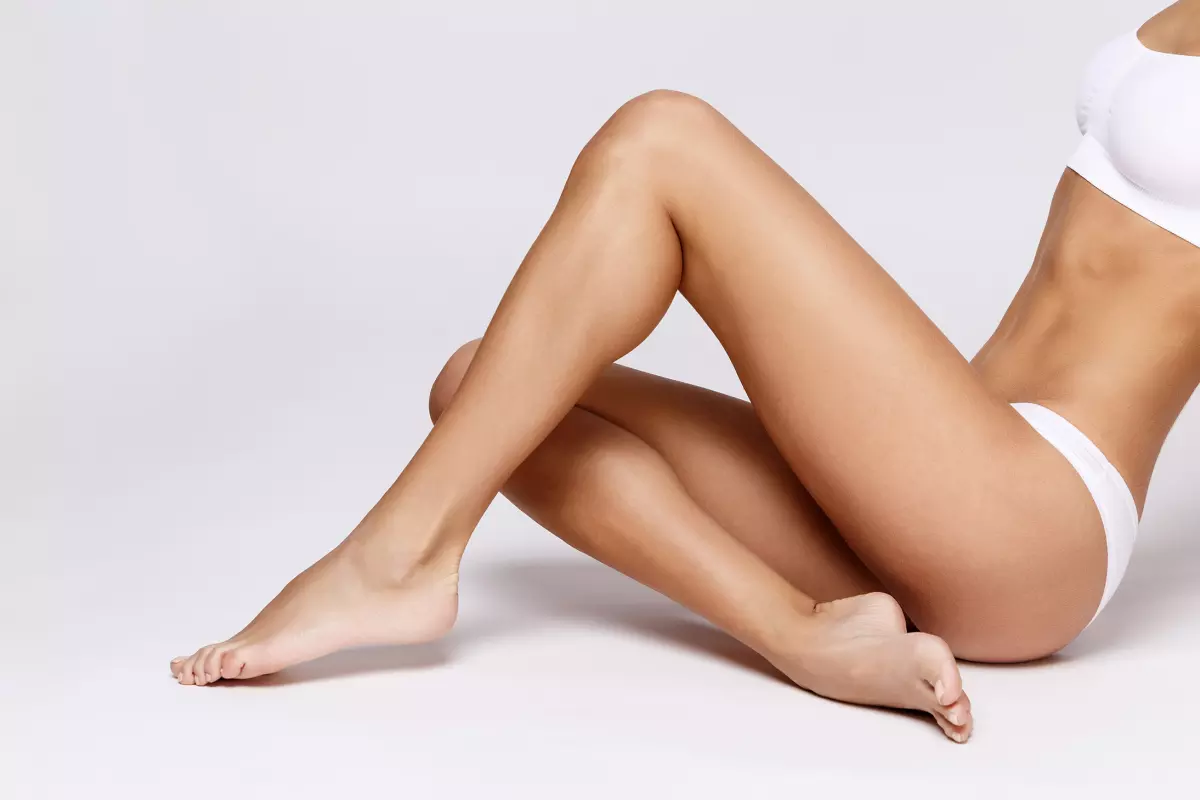
The reason for this is a completely incorrect assessment of the leg situation: Liposuction can remove fat, but it can never reduce muscle size or even tighten sagging skin.
In the following, we explain the leg situation in detail with the intention of making your expectations of liposuction as realistic as possible.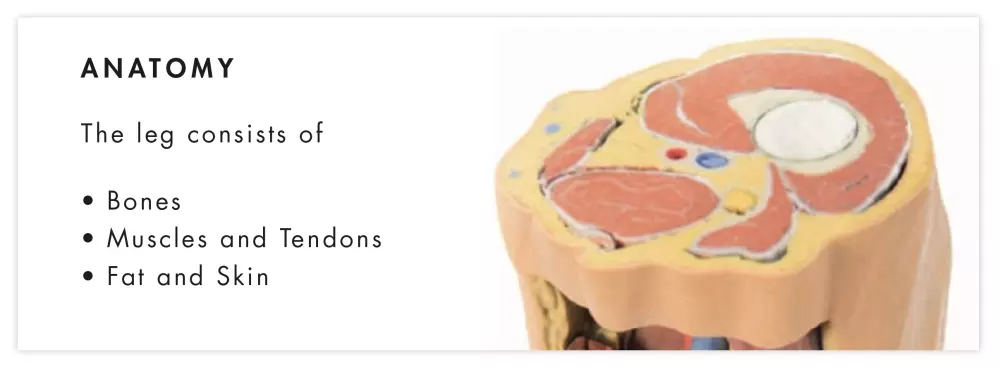
Leg volume is based on the volume of muscle, bone, skin and fat underneath. The circumference of a leg is defined primarily by the volume of the muscle; the leg consists of 90% muscle mass and a maximum of 10% fat.
The cause of strong legs is in most cases strong muscles (i.e. constitution or genetics) and only sometimes excessive fatty tissue. A strong musculature is called muscle hypertrophy, an excess of fat is called fat hypertrophy or fat hyperplasia. In very rare cases, the fatty tissue is "sick" and swells up as soon as the person walks, stands or sits. This is often associated with pain emanating from the fatty tissue. This fat distribution disorder is called lipedema disease.
There are so many different types of legs – long, short, thin or thick.
Legs that do not seem to fit the proportions of the body can be explained in 60% of all women exclusively by very pronounced musculature, in 35% by a mixture of a lot of musculature and disproportionate fat pads, and only 5% of women have lipedema.
If it's the MUSCLE...
The legs of a bodybuilder are disproportionately firm, but the leg is made up of muscle and not fat. This example picture is intended to show the volume that muscles can create on the leg.
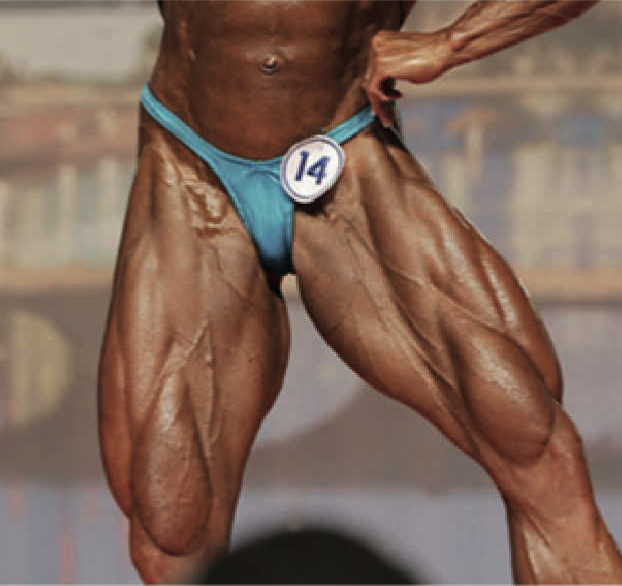
In many women, their leg volume is caused by their strong muscles, without this being perceived as such, because the upper layer of the leg consists of a soft, movable layer of fat.
If it is the FAT...
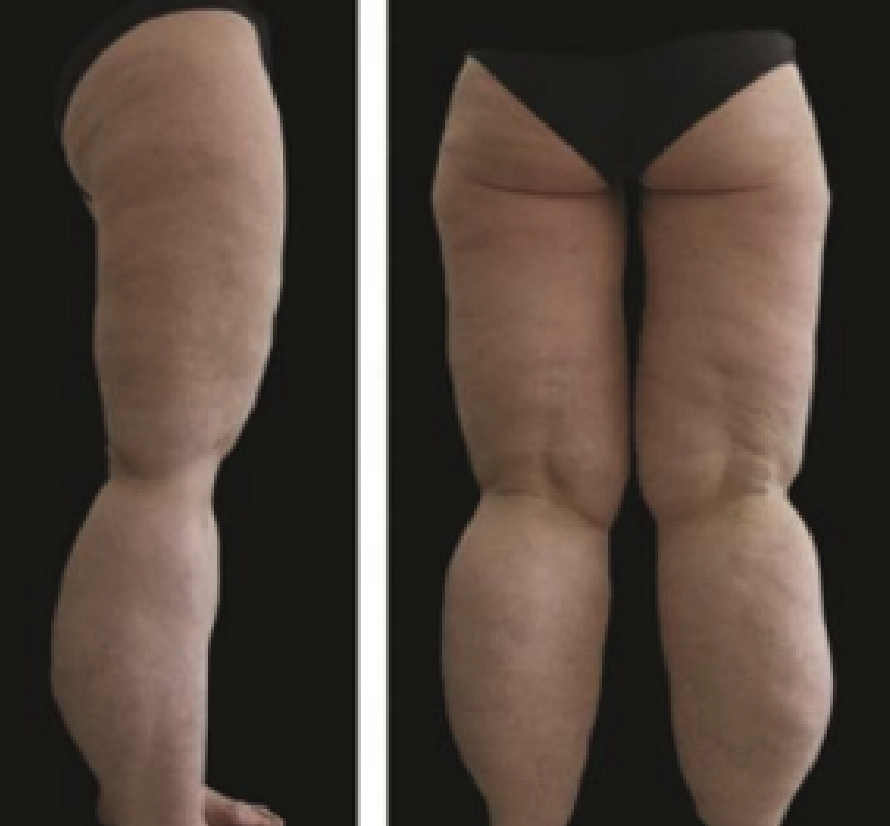
The legs in this example picture are defined by an excessive volume of fat, which is often genetic or inherited. As a rule, the fat is resistant to exercise or diet and does not change on its own; this is also known as fat hypertrophy or fat hyperplasia. Each treatment is preceded by an analysis of the individual leg situation. The decisive factor for treatment is whether the appearance of the leg is defined by fat or muscle. There are various ways of determining what the leg is made of.
An MRI can be used to precisely depict and analyze a leg; in the example image, the white is fat and the grey is muscle. Such an examination is very expensive and time-consuming.
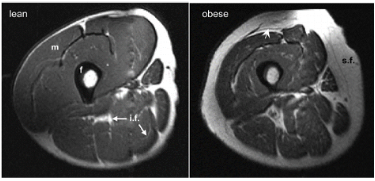
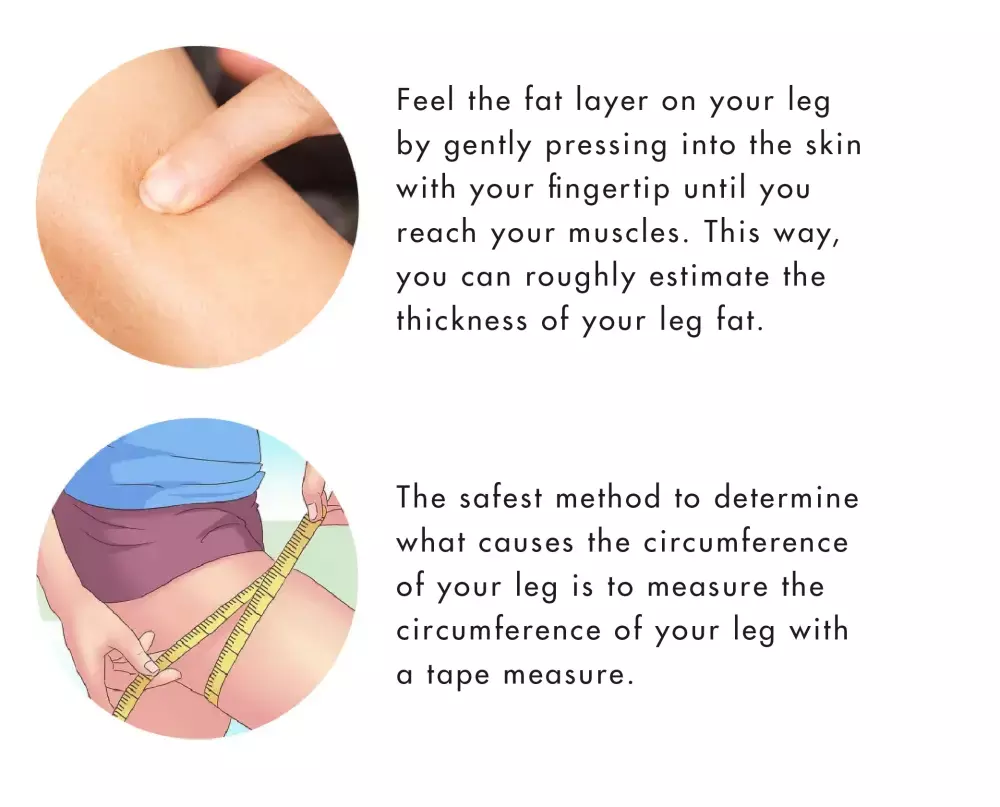
This is how it works:
Measure the circumference approximately in the middle of your thigh by placing the measuring tape very loosely around your leg. Write down the centimeters, let's say it's 58cm. Now measure again, but this time pull the tape measure tightly together. You can compress fat, but not muscle (it is best to tense your muscle). Let's say the circumference is now only 54cm, you therefore know that your fat layer makes up a maximum circumference of 4cm. This means that thinning out your fat layer on your leg could reduce the circumference by about 4cm. 4cm can be a lot for one person and not enough for another – but that's the point.
This is roughly how you can imagine the result of liposuction:
A simple way to visualize what the result of liposuction on the leg will look like is quite simple: Stand in front of the mirror with bare legs. Pull the tissue backwards on the outside and inside while tensing your muscles. You can pull away fat, but not muscles.
The calves also consist mainly of muscle, which is why liposuction alone may not produce the desired result. It is possible to inject botulinum toxin into the gastrocnemius muscle of the calf – this makes the calf look slimmer and more delicate.
The treatment is carried out under ultrasound control and takes just a few minutes. It is virtually painless and can be carried out in twilight sleep if required. You can go back to work immediately afterwards and return to sport after 2 days.
The cost for 2 ampoules is CHF 1200.00 per treatment, the results usually last 6-12 months or even longer.
Botox can also be injected into other leg muscles. However, it often takes several treatments until a large muscle on the thigh has become measurably thinner.
Saddlebags consist of fat and muscle. What can you expect as a result? Do the muscle test: Stand in front of the mirror and pull your bottom as tight as possible. In some cases, this maneuver will make the saddlebags much better: This is a sign that the saddlebags have a large muscular component that will not disappear by removing the fat. In such cases, the lateral curves are significantly improved by liposuction, but still remain feminine.
The volume on the inner thighs consists of the adductor muscles and fat. Fat can be liposuctioned, but unfortunately muscles cannot. Depending on the muscles and their development, an "O" may or may not appear between the legs.
Some people appear to have fat on the left and right side of the kneecap. We refer to this as "pseudo-fat" – as a rule, this is not fat, but skin. The skin cannot slide further down over the kneecap at this point but remains "stuck" to the knee and therefore causes the deformity there. If you lie on your back and stretch your knees towards the ceiling, the knee should look nice again. Is this true? This would prove that the problem is not fat, but sagging skin, because only skin can shift.
Unfortunately, this excess skin cannot be suctioned off, liposuction would make it wrinkly and saggy. In such cases, we treat the region with fat-away injections. This can be successful in individual cases, but does not always work. In contrast to liposuction, the skin quality does not deteriorate as a result.
Many patients with lipedema are disappointed after liposuction because they expected more from the procedure. These are the most common reasons:
False Expectations of the Aesthetic Result
Every leg with lipedema follows the normal anatomy: In addition to fat, the leg consists of muscles, and experience has shown that lipedema patients often have very pronounced muscles. These strong muscles will remain after liposuction, even if they are often difficult to feel due to spongy skin.
Therefore: Please carry out all the tests mentioned to get an idea of what is fat volume and what is muscle on your leg. Only then will you have realistic expectations of the procedure.
False Expectations of Freedom from Pain
In many cases of lipedema, pain occurs in combination with other conditions such as muscular overexertion due to neglected leg muscles/excessive body weight, shortened muscles, crooked leg axes, soft tissue rheumatism, osteoarthritis or other wear and tear. Liposuction does not eliminate the other sources of pain. It is therefore very important to first rule out the various other causes of lipedema pain before undergoing liposuction.
False Expectations of Freedom from Swelling
Swelling usually decreases massively after liposuction. In individual cases, however, it is possible that the swelling will not disappear. For this reason, we have summarized the most important points for you so that you can decide to undergo such a procedure with the most realistic expectations possible.
We understand that aesthetic treatment needs to be carefully considered. We are therefore happy to take the time to answer all your questions during a free, no-obligation initial consultation. Arrange your consultation appointment today at one of our two LIPOCLINICs.
If you would like a brief online preliminary clarification before your consultation, you can also contact us by e-mail.
No matter how you want to reach us – we look forward to hearing/reading from you!